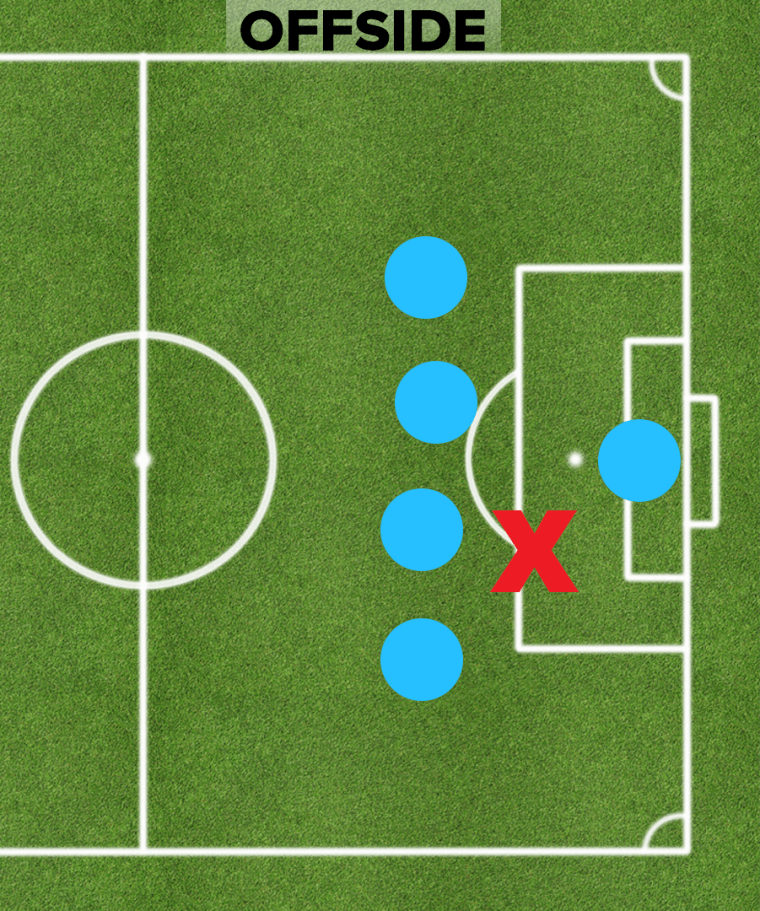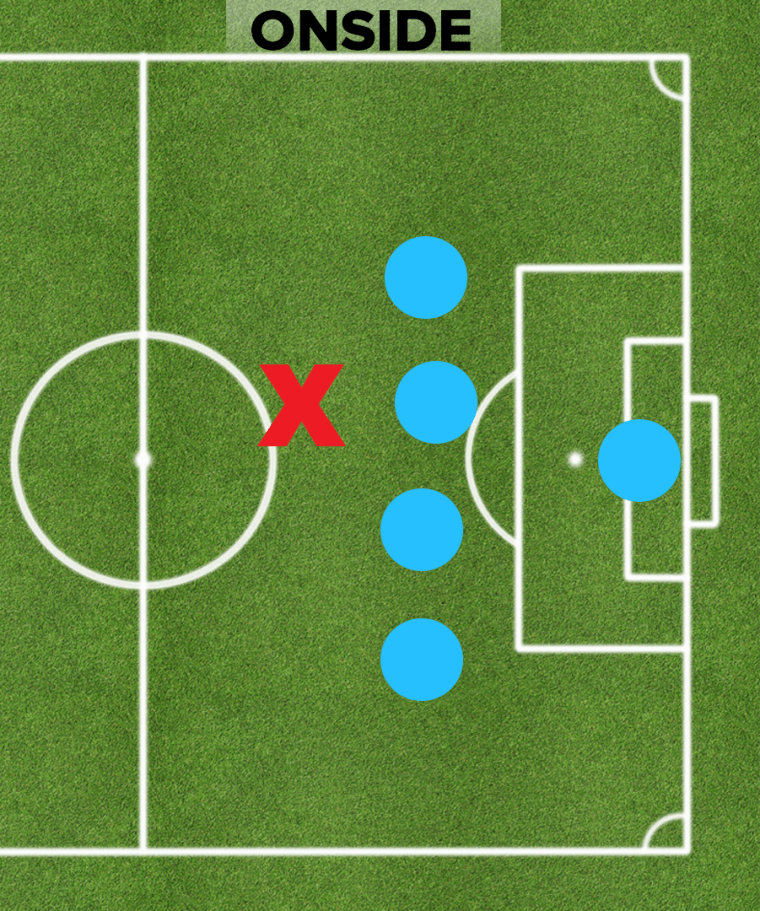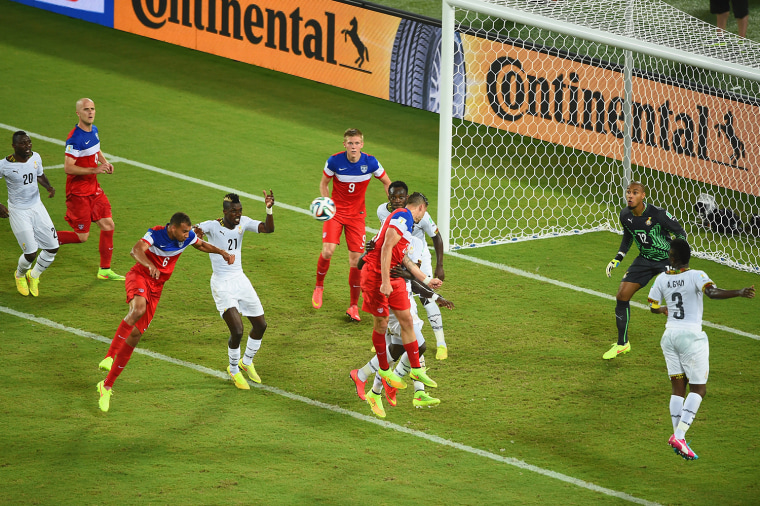Kit? Pitch? Offside? The world’s game has its very own language, and it can be confusing for new fans.
If you’ve come down with a serious case of World Cup fever, but don’t know the game so well, have no fear. Here are answers to nine basic soccer questions you may be too embarrassed to ask in public. (And yes, Savannah, soccer players are allowed to score with their heads – but more on that below).
What’s a kit?
Finally, a chance to talk fashion on the field. Kit is just soccer slang for uniform. This year, I especially like Ghana's kit (pictured above). The white shirts and shorts with traditional African trim makes for a proud statement.
Pitch? Isn’t that a baseball term?
It’s a soccer phrase, too. This is just another word for the field of play. The origin of the phrase remains unclear to this day.
What does it mean to be offside? And what’s with the ‘trap’?
As a parent often screaming on the sideline at my sons’ soccer games, this is one rule that’s always tough to understand as an onlooker – often because you’re not in a good position to judge it. Instant replay allows World Cup viewers to see the moment again and again, but here's the way my husband explains it as our kids’ assistant soccer coach:
“The offensive player can’t be behind the last defender (not including the goalkeeper) before the ball is kicked or passed. There's no offside on throw-ins. So the trick is the offensive players have to time their runs and passes so that they don’t get behind the last defender before the pass occurs. To combat the offensive players steaming towards them, some defenses will suddenly surge forward in an effort to catch the offensive players in an offside position. This is the called the ‘offside trap.’”
Totally makes sense, right? If not, check out these handy illustrations of open play (X represents an offensive player; the O's are the opposing team's defenders):


What’s with goalies wearing different-colored uniforms?
The goalies need to stand out and to eliminate confusion for the refs. They are the only players who can use their hands during open play, so they need to be clearly visible.
Okay, so why is Brazil so good at this game?
Brazil has won the World Cup a record 5 times, so yes, they are considered the best in the world. From the minute kids are born they have a soccer ball at their feet. It's more than a national pastime – it’s religion. In fact, following church most Sundays, families gather around to watch the teams they support play in afternoon matches. Soccer also equals salvation for many in the poorest neighborhoods. Rio's favelas (shantytowns) have turned out some of the world's best – including Pele, arguably the greatest to ever play the game – because that’s their way out of poverty. So practice, practice, practice!
Yes Savannah, you can score using your head
Savannah may have jokingly asked on air if soccer players are permitted to score with their head, but in fact it’s one of the most effective ways to score, especially off a corner kick (see John Brooks’ game-winning goal for the U.S. against Ghana).

This World Cup we've seen some incredible headers, none better than a goal by Dutchman Robin Van Persie that launched a worldwide meme!
Go to the corner – but when?
A corner kick is given to the attacking team (the players trying to score) when the defending team kicks the ball out over the goal line. The attacking team is then permitted to kick the ball across from the left or right corner, setting up a nice shot for their players, if in proper position.
Yellow card: Caution
A yellow card is a penalty given to a player for unsporting behavior. For example: holding or intentionally playing dirty, harassment, even faking an injury. It serves as a stern warning from the ref, and the other team receives a direct kick at goal. If a player gets "booked" with two yellows they automatically receive a red card, which means…
An early shower
Two yellow cards or a straight red (given for serious foul play, as well as use of excessive force and/or the intention to harm) means an immediate ejection, and the added burden that your team must continue on with one less player for the duration of the game. Just the other day, Portuguese defender Pepe head-butted a German opponent and received a red card.
Not only was he ejected, but FIFA (the sport’s international ruling body) requires that the player miss the following game as well. And there are other factors that could trigger a red card: if a player (not a goalie) tries to intentionally stop the ball from going into the goal using his hands; spitting; bad language and offensive gestures.
And that’s the game in 9 simple facts. Happy conversing!